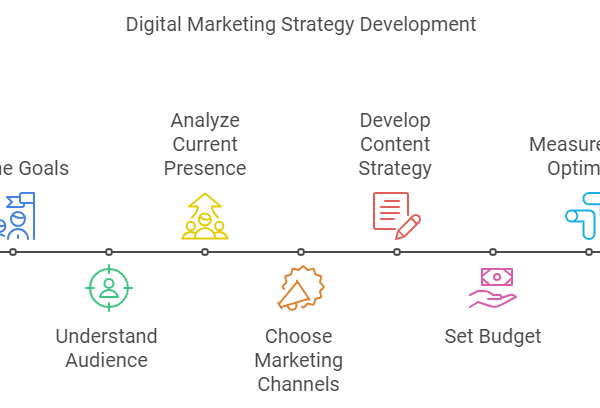
E-commerce Web Development: The Key to Online Success
E-commerce web development has become a cornerstone of modern business, enabling companies to reach customers across the globe and operate around the clock. With the growth of online shopping, building a robust e-commerce website is essential for businesses of all sizes. In this article, we’ll explore the key components of e-commerce web development, providing insights on how to create a successful online store.
Choosing the Right E-commerce Platform
Selecting the right e-commerce platform is a critical decision that can affect every aspect of your online business. There are several popular platforms to choose from, each with its unique features and advantages. Let’s explore some of the most common ones.
Shopify
Shopify is a user-friendly platform designed for small to medium-sized businesses. It offers a wide range of templates, a simple setup process, and an extensive app store for customization. Shopify provides hosting, so you don’t need to worry about managing servers. It’s an excellent choice for entrepreneurs who want to focus on their business without dealing with technical complexities.
WooCommerce
WooCommerce is an open-source e-commerce plugin for WordPress. If you’re already familiar with WordPress, WooCommerce offers a flexible and highly customizable solution. It’s ideal for those who prefer complete control over their website’s design and functionality. WooCommerce allows you to integrate with various plugins and themes, giving you the freedom to create a unique online store.
Magento
Magento is a robust platform designed for larger enterprises. It provides advanced features, scalability, and extensive customization options. However, Magento requires technical expertise to set up and maintain. If you’re planning to build a complex e-commerce site with a large inventory, Magento could be the right choice.
BigCommerce
BigCommerce is another platform that balances ease of use with flexibility. It offers a range of templates, supports multi-channel selling, and provides built-in features for SEO and digital marketing. BigCommerce is suitable for businesses that expect to scale and need a platform that can grow with them.
Designing for User Experience
User experience (UX) is a crucial factor in e-commerce web development. A website that is easy to navigate, visually appealing, and responsive will encourage visitors to stay and make purchases. Here are some key elements to consider when designing for UX.
Responsive Design
A responsive design ensures that your website looks and functions well on all devices, from desktops to smartphones. With more users shopping on mobile devices, it’s essential to provide a seamless experience across different platforms. Responsive design is no longer optional; it’s a necessity for e-commerce success.
Intuitive Navigation
Intuitive navigation helps users find what they’re looking for quickly. Use clear categories, filters, and a search function to guide customers through your site. A well-structured navigation system reduces bounce rates and increases the likelihood of conversions.
High-Quality Product Images
High-quality product images are crucial in e-commerce. They allow customers to visualize your products and make informed purchasing decisions. Consider using multiple images to show products from different angles. Adding product videos can also enhance the user experience by providing additional information.
Secure Payment Processing
Customers need to trust that their payment information is secure. Secure payment processing is a key component of e-commerce web development. Here’s how to ensure your website provides a safe and secure environment for transactions.
SSL Certificates
An SSL certificate encrypts data transferred between your website and the user’s browser. This is essential for protecting sensitive information and building customer trust. Additionally, search engines prioritize websites with SSL certificates, making it a must-have for SEO.
Reputable Payment Gateways
Using reputable payment gateways like PayPal, Stripe, or Square ensures secure transactions. These gateways offer robust security features and are widely recognized by customers. By integrating trusted payment gateways, you can reduce the risk of fraud and enhance customer confidence.
Compliance with PCI DSS
The Payment Card Industry Data Security Standard (PCI DSS) outlines security requirements for processing payment information. Compliance with these standards helps prevent data breaches and ensures customer data is handled securely. Make sure your e-commerce site follows these guidelines to avoid security risks.
SEO and Digital Marketing Integration
Search engine optimization (SEO) is critical for driving organic traffic to your e-commerce site. Without effective SEO, potential customers may never find your website. Here are some key strategies to improve your site’s visibility.
Keyword Research
Identify relevant keywords and phrases that your target audience is searching for. Use tools like Google Keyword Planner to find high-traffic keywords in your niche. Incorporate these keywords naturally into your site’s content, meta descriptions, and title tags to improve your search engine rankings.
On-Page SEO Optimization
On-page SEO involves optimizing various elements on your site to improve visibility. This includes title tags, meta descriptions, headers, and image alt text. By following on-page SEO best practices, you can boost your site’s ranking on search engines.
Content Marketing
Content marketing is a long-term strategy that involves creating valuable content to attract and engage visitors. Write blog posts, product guides, and other informative content to showcase your expertise and build a connection with your audience. Content marketing not only improves SEO but also helps establish your brand as an authority in your industry.
Social Media and Digital Marketing
Social media and digital marketing play a significant role in promoting your e-commerce site. Establishing a strong social media presence can help you connect with customers and drive traffic to your website.
Building a Social Media Presence
Social media platforms like Facebook, Instagram, and Twitter offer excellent opportunities to reach a broader audience. Share engaging content, interact with customers, and promote your products through social media campaigns. Social media is a powerful tool for building brand awareness and driving traffic to your e-commerce site.
Email Marketing Campaigns
Email marketing allows you to reach customers directly. Create targeted email campaigns to promote products, offer discounts, and share news about your business. Personalize your emails to increase engagement and conversion rates. Email marketing can be a powerful tool for building customer loyalty and driving repeat sales.
Influencer Partnerships
Collaborating with influencers in your industry can help you expand your reach. Influencers have a loyal following and can promote your products to a broader audience. By partnering with influencers, you can increase brand visibility and drive more traffic to your e-commerce site.
Conclusion
E-commerce web development is a complex process that requires careful planning and execution. From choosing the right platform to ensuring secure payment processing, every aspect plays a role in the success of your online store. By focusing on user experience, security, SEO, and digital marketing, you can create a successful e-commerce site that attracts and retains customers.











